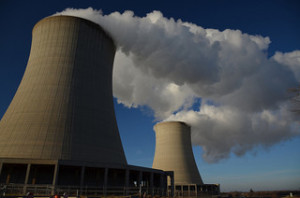Podcast: Play in new window | Download
Subscribe: Apple Podcasts | RSS
 We enjoy a wide-ranging conversation about nuclear power with guest Akira Tokuhiro in this episode of The Engineering Commons podcast.
We enjoy a wide-ranging conversation about nuclear power with guest Akira Tokuhiro in this episode of The Engineering Commons podcast.
- Out at the road construction job site, Adam notes that most of the energy is provided by diesel fuel.
- Our guest, Dr. Akira Tokuhiro, is a Professor of Mechanical and Nuclear Engineering at the University of Idaho.
- Akira showed a “knack” for engineering from an early age, having disassembled his mother’s sewing machine when he was two or three.
- An early interest in Formula One racing led our guest to investigate a different type of system integration: Nuclear Engineering.
- Dr. Tokuhiro encourages youngsters with a technical bent to consider nuclear engineering, as it combines a number of interesting sub-disciplines.
- There are about 105 nuclear power plants in the United States, and the country produces about 1,000 nuclear engineering graduates each year.
- Brian asks about the status of the International Thermonuclear Experimental Reactor (ITER) Project in France.
- According to the International Atomic Energy Agency (IAEA), there are currently 70 nuclear power plants under construction worldwide.
- Researchers are currently working on designs for Generation IV reactors.
- Akira served as a committee member on the American Nuclear Society’s (ANS) report about the Fukushima accident in 2011. Our guest has commented elsewhere about his visit to the Fukushima Dai-ichi plant.
- The severity of nuclear accidents can be rated using the Intenational Nuclear Event Scale (INES).
- Japan recently shut down all of its nuclear reactors.
- Jeff and Akira discuss the perception of risk via cognitive maps, and the notion of “safety culture.” A cognitive risk map can be seen on page 10 of a presentation that Dr. Tokuhiro gave in 2011.
- Brian asks about alternate reactor configurations, such as pebble bed, traveling wave, and liquid flouride thorium technologies.
- Yucca Mountain was at one time the designated location for depositing radioactive waste in the United States. However, the nation currently lacks a long term storage site for high-level radioactive waste.
- Brian asks about the state of nuclear waste reprocessing in the US. One possibility for reducing the radiation hazard is nuclear transmutation.
- Akira Tokuhiro can be reached through his email address: tokuhiro — at — uidaho.edu
Thanks to Michael Kappel for the photograph titled “Nuclear Cooling Towers.” Podcast theme music provided by Paul Stevenson